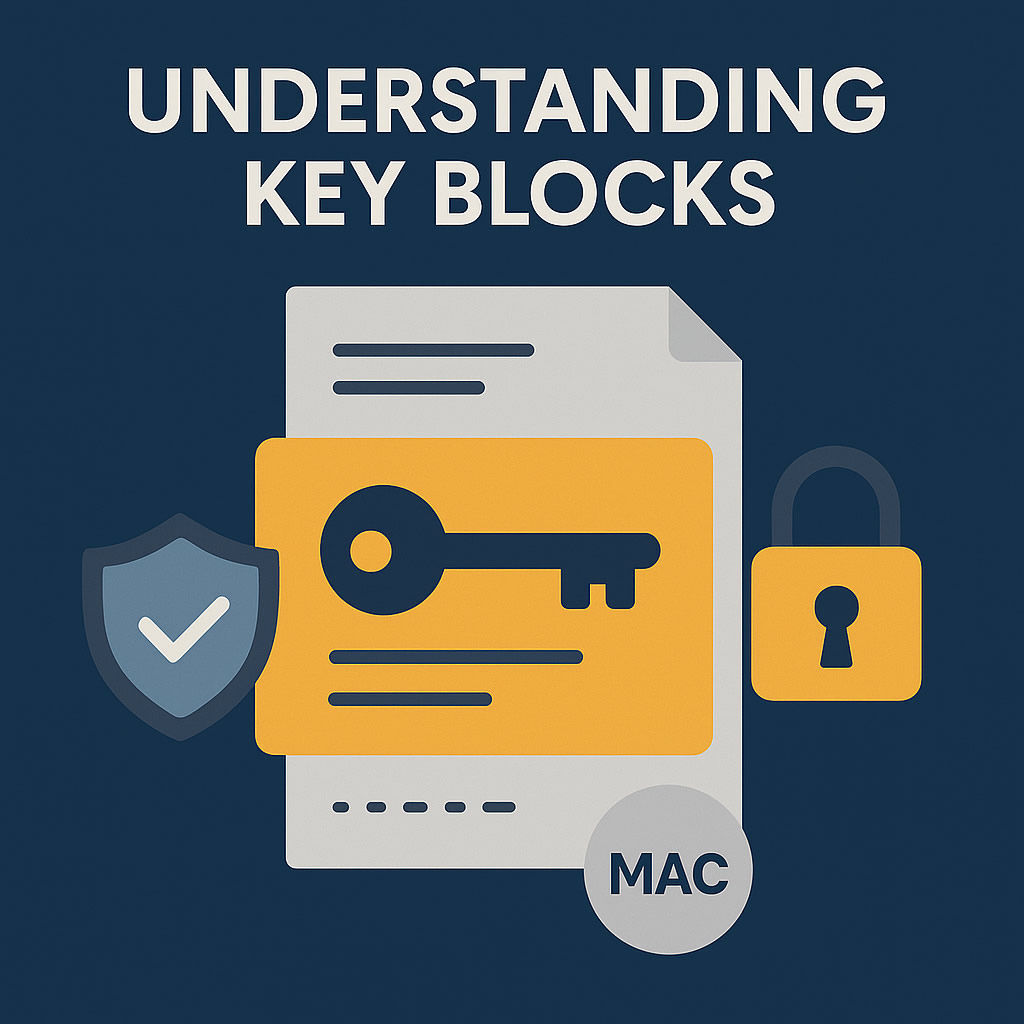
What Are Key Blocks?
In cryptography, a Key Block is a structured format used to securely store and transmit cryptographic keys. It encapsulates the key material along with metadata that defines the key’s usage, origin, and integrity controls. This structure ensures that cryptographic keys are protected not only during storage and transmission but also against unauthorized use, thereby enhancing overall system security and regulatory compliance.
The Genesis of Key Blocks
The concept of Key Blocks was pioneered in the early 1970s by Mohamed M. Atalla, an Egyptian American engineer and inventor. In 1972, he introduced the first hardware security module (HSM)—the Atalla Box, which brought with it the Atalla Key Block (AKB) format. This format was instrumental in protecting PINs and encryption keys used in ATM and payment systems, and it laid the groundwork for modern secure key management across the financial sector.
Evolution and Standardization
Following the introduction of the AKB, the financial industry recognized the need for standardized approaches to secure key exchange and storage. This led to the development of several key block formats and international standards:
- ANSI X9.24: A set of standards that guide secure key management for financial services.
- ANSI TR-31: A technical report that specifies a key block format for symmetric key exchange, enabling secure interoperability between devices and vendors.
These standards help ensure that key blocks are both secure and compatible across different systems and organizations.
Key Block Formats
Over time, different key block formats have emerged to meet specific operational and cryptographic needs:
- TR-31 Key Block: As defined by ANSI X9.24/TR-31, this format includes a header specifying key attributes (e.g., key usage, algorithm), the encrypted key itself, and a Message Authentication Code (MAC) to ensure integrity.
- IBM CCA Key Block: Used within IBM’s Common Cryptographic Architecture, this format contains additional elements such as control vectors that define how the key can be used.
- TR-34 Key Block: An extension of TR-31 for asymmetric key exchanges, TR-34 incorporates public key cryptography to securely distribute symmetric keys using digital certificates and asymmetric encryption.
Conclusion
Key Blocks have become a cornerstone in modern cryptographic key management. By offering a secure, standardized approach to handling and transporting keys, they play a crucial role in protecting sensitive information—especially in regulated industries like banking, retail payments, and fintech. The evolution of Key Blocks from proprietary formats like AKB to widely accepted standards like TR-31 and TR-34 reflects the industry’s growing focus on interoperability, compliance, and resilience against cyber threats.
